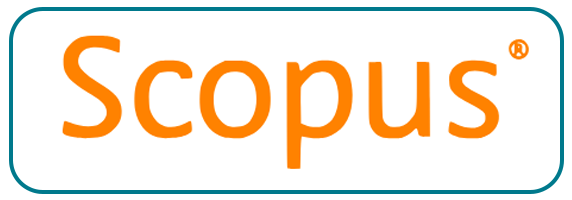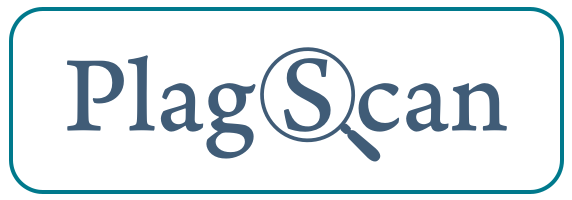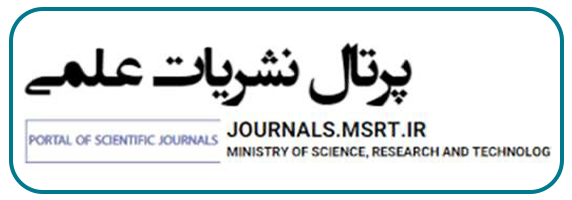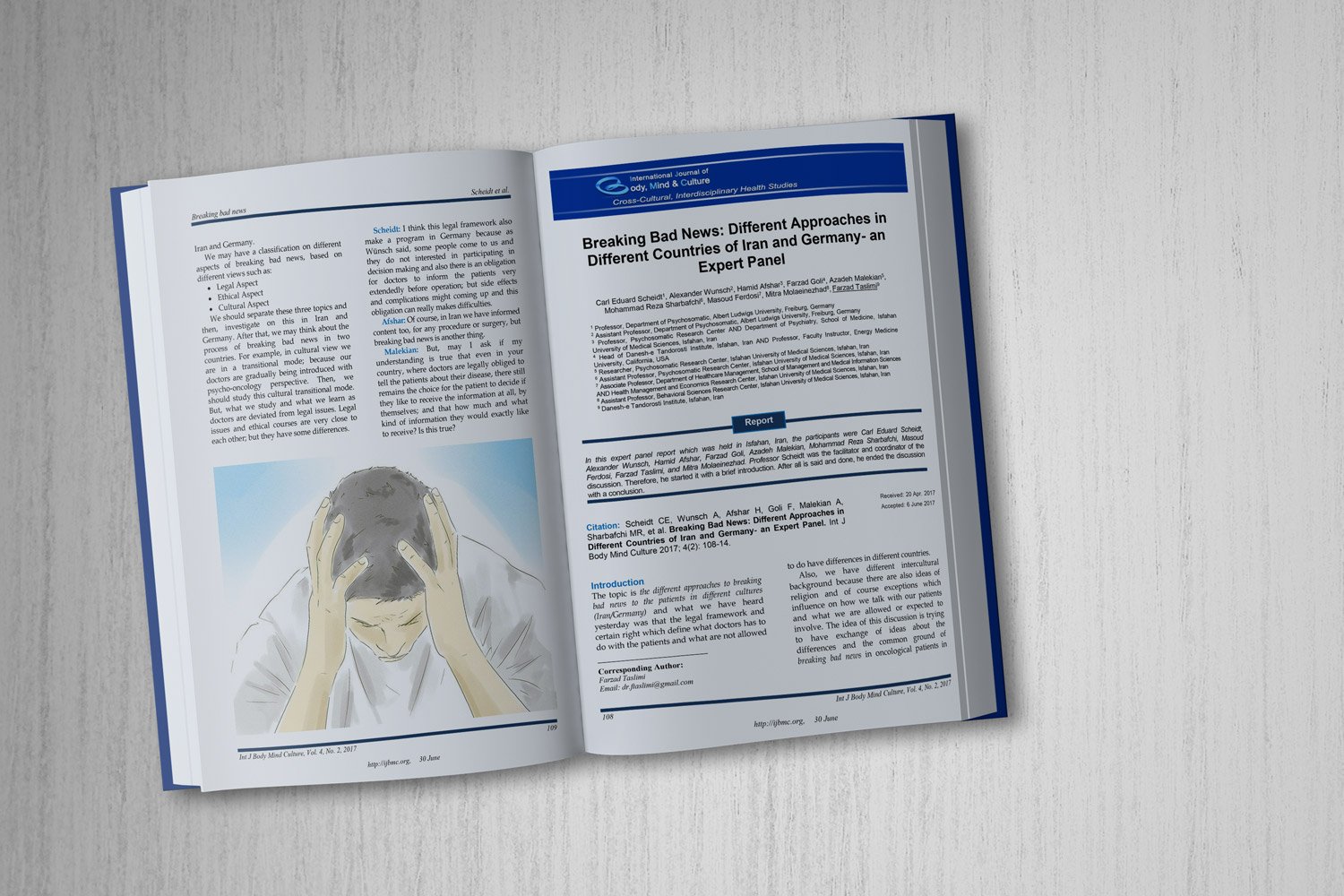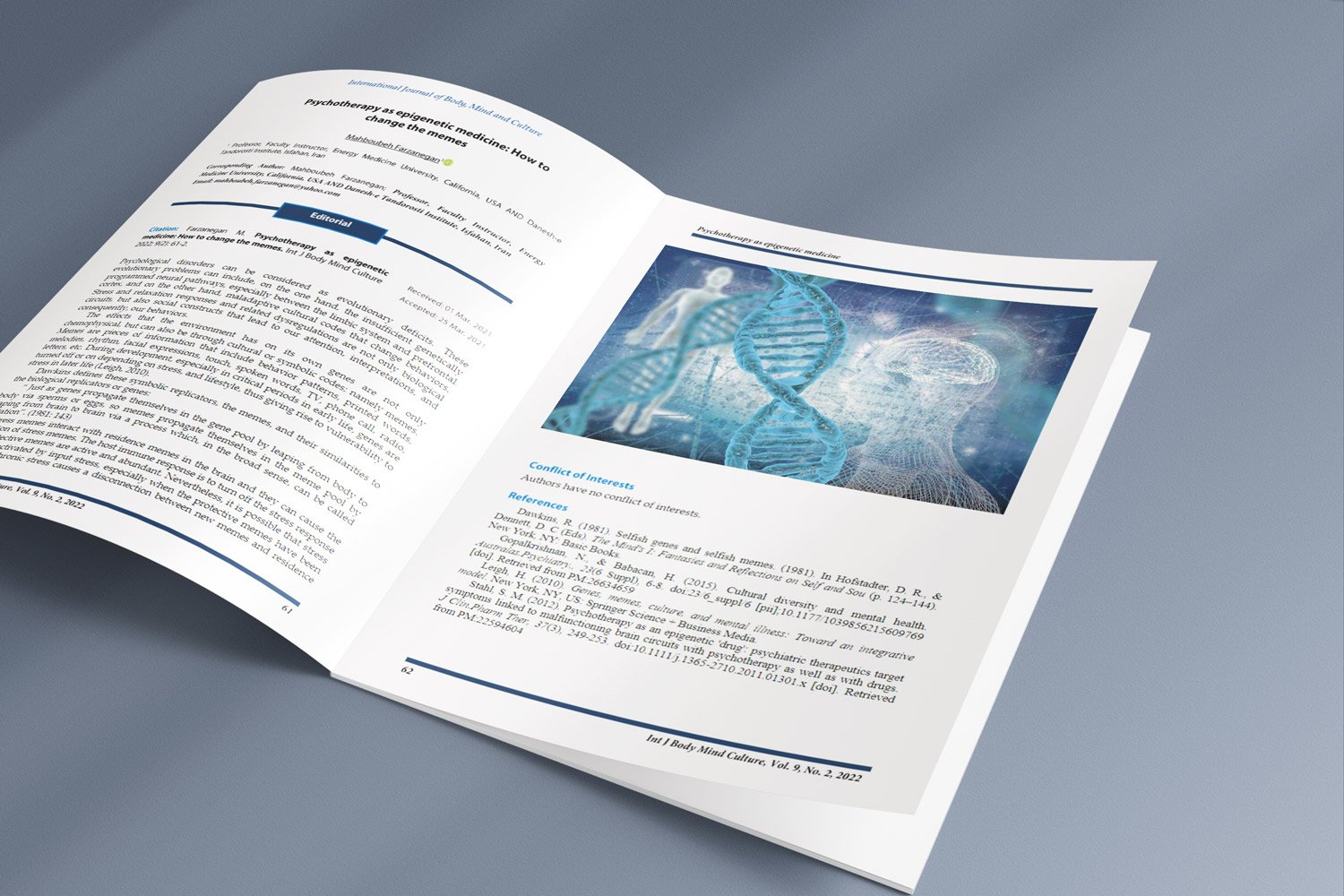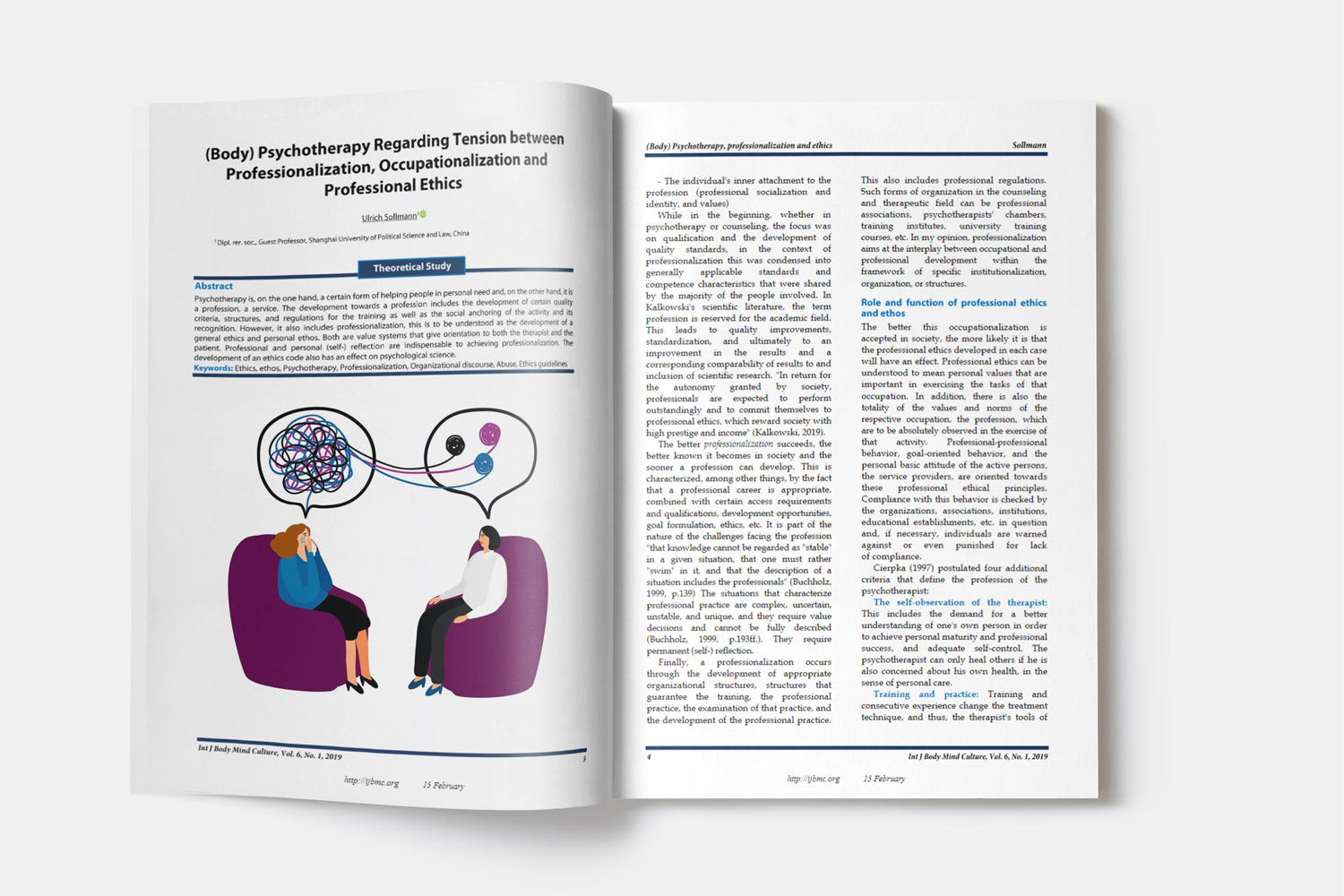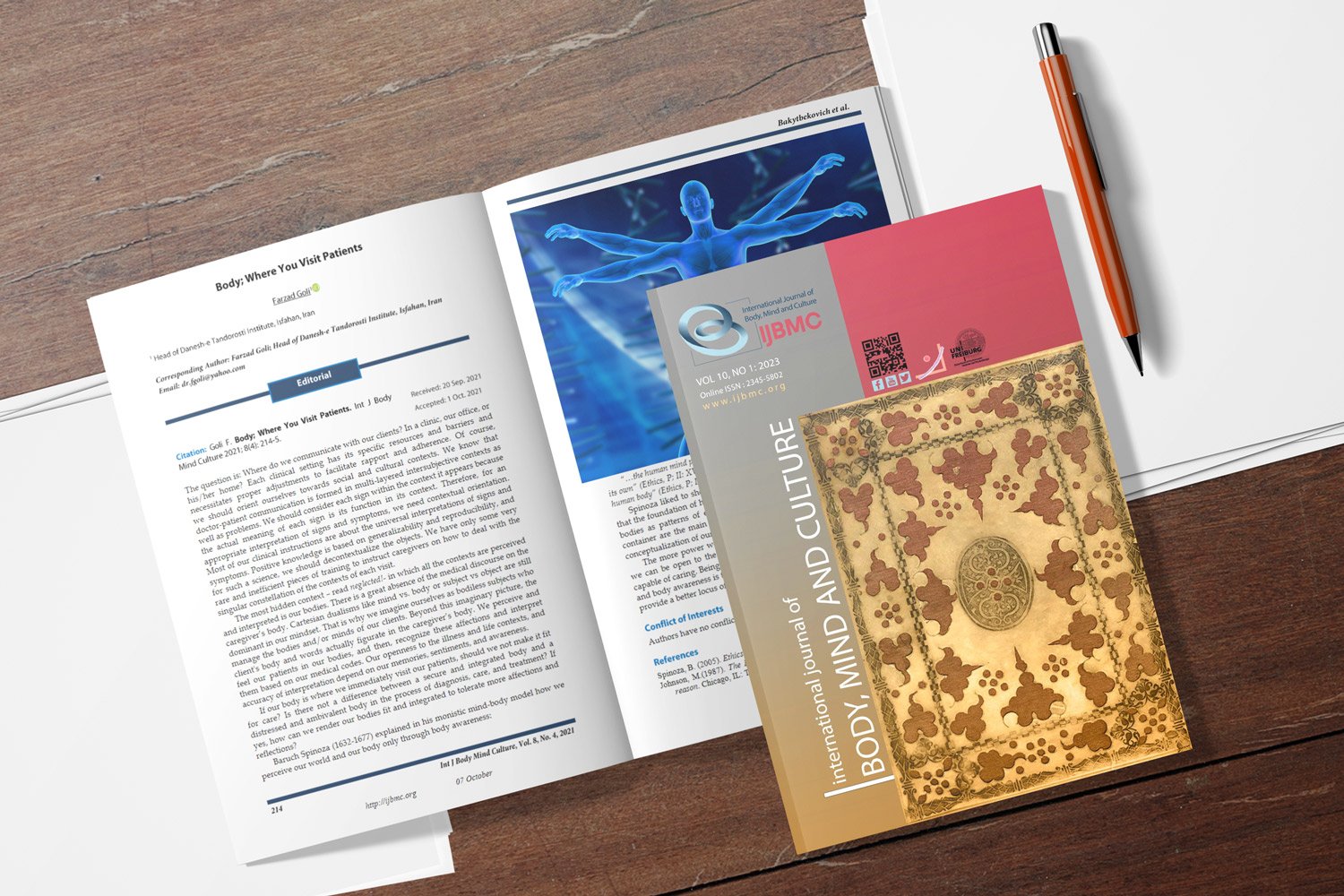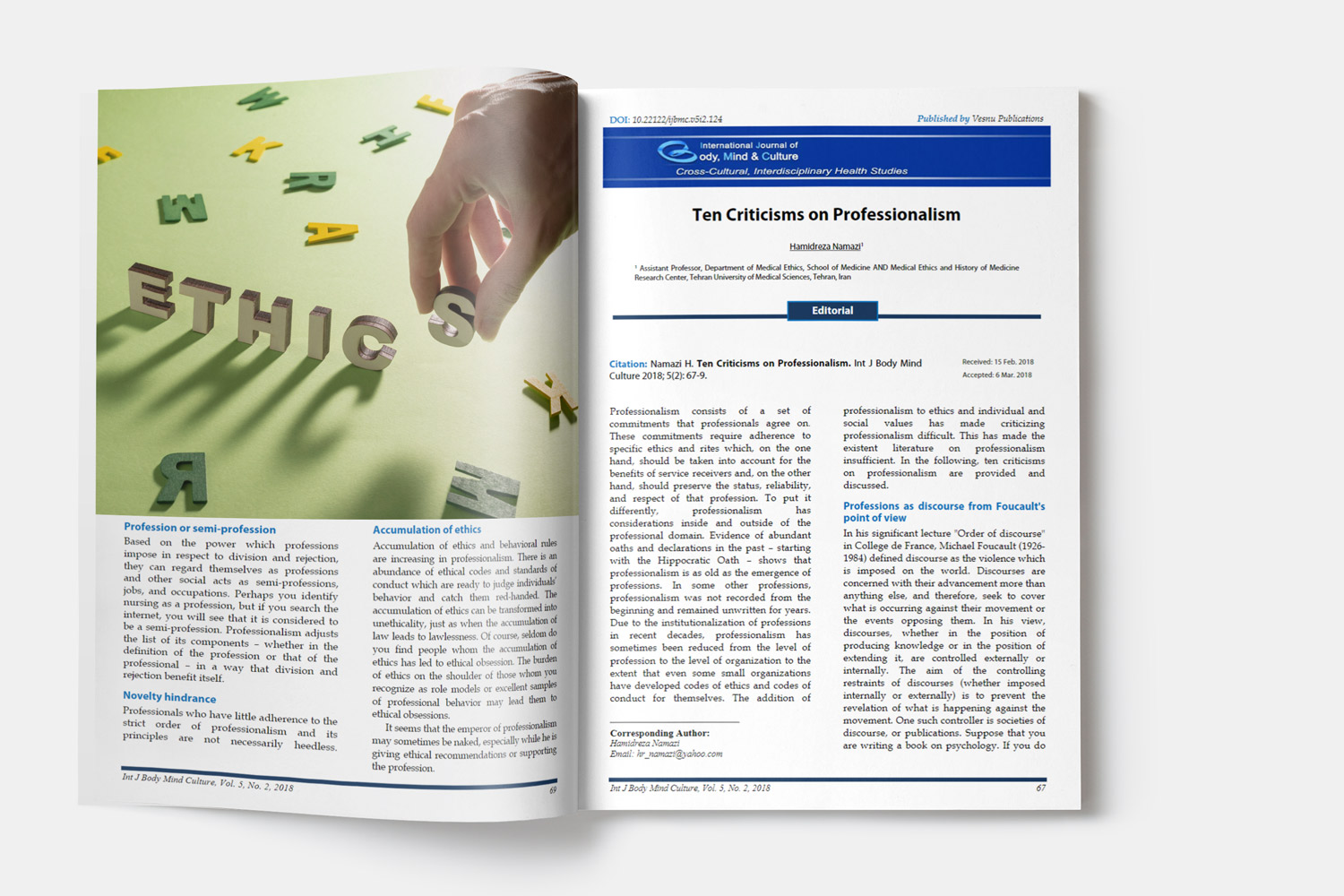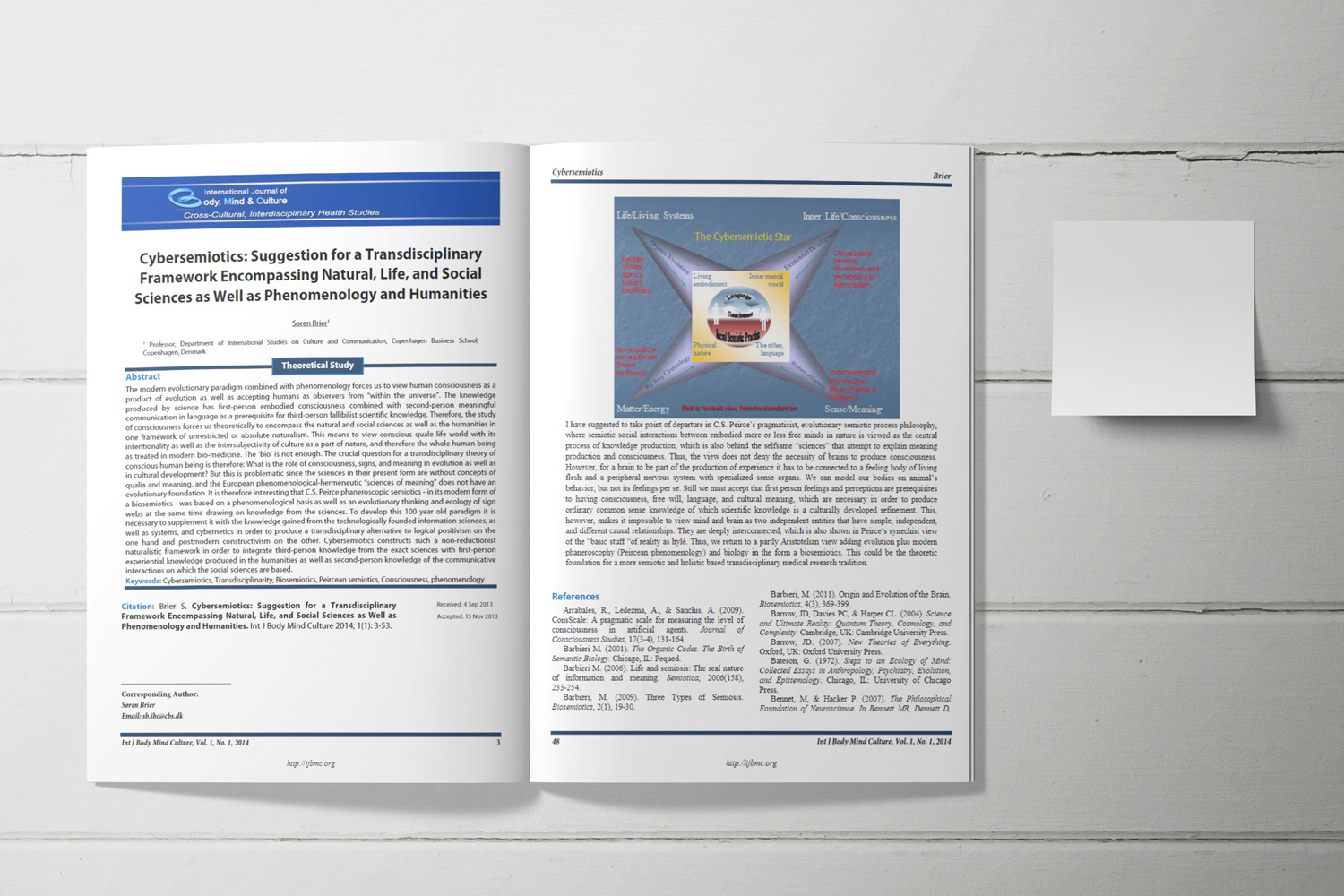Systematic Review of Family Factors Associated with Substance Abuse in Adolescents: A Comparative study between Iran and Developed Countries
Family factors associated with substance abuse in adolescents
Downloads
The present study was a systematic review of family factors related to substance abuse in adolescents. The inclusion criteria for the studies in this review included: (1) being a qualitative research, (2) adolescents (10 to 19 years old) were adolescents, and (4) the results being directly related to studies on family factors related to substance abuse in adolescents. The main family factors related to substance abuse in teenagers include high-risk family factors, childhood abuse, parents' and nurses' addiction, parental supervision, and parenting methods. The main social factors include high-risk social factors, peer groups, the influence of media and technology. The high-risk individual factors were attention deficit/hyperactivity disorder (ADHD), depression, anxiety disorders, sensationalism and impulsivity, and self-esteem. In developed countries, the related family factors included the presence of addicts in the family, family differences and lack of affection in the emotional relationships of the family, lack of restraint and suitable supervision by parents and the use of inappropriate educational methods, divorce and separation of parents. These factors were found to have a significant effect on drug addiction in the comparison of two groups of affected and non-affected young people. In Iran, family factors effective on drug use included a history of abuse in childhood, addiction of parents or one of the family members, marital conflicts of parents, low socio-economic status, emotional atmosphere of the family, educational methods of parents, and perception of teenagers towards the acceptance of drug use by parents. Family factors were one of the most important factors involved in substance abuse; this highlights the prominent role of the child-parent relationship, parents' interpersonal relationships, parenting methods, and relationships with siblings in this regard. Psychological problems such as ADHD, depression, anxiety disorders, sensation seeking and impulsivity, and low self-esteem are among the individual factors that are related to substance abuse in adolescents, and some adolescents try to reduce and alleviate the symptoms of these disorders through substance use.
Downloads
Agrawal, A., & Lynskey, M. T. (2008). Are there genetic influences on addiction: evidence from family, adoption and twin studies. Addiction., 103(7), 1069-1081. doi:ADD2213 [pii];10.1111/j.1360-0443.2008.02213.x [doi]. Retrieved from PM:18494843
Akbari, B., & Amoupour, M. (2010). The Relation Depression with Attitude Drug abuse in high school Students the Rasht city. Journal of Educational Psychology, 1(2), 1-15.
Alavi, H. R. (2011). The Role of Self-esteem in Tendency towards Drugs, Theft and Prostitution. Addict Health, 3(3-4), 119-124. doi:AH-03-119 [pii]. Retrieved from PM:24494126
Anda, R. F., Felitti, V. J., Bremner, J. D., Walker, J. D., Whitfield, C., Perry, B. D. et al. (2006). The enduring effects of abuse and related adverse experiences in childhood. A convergence of evidence from neurobiology and epidemiology. Eur.Arch.Psychiatry Clin Neurosci, 256(3), 174-186. doi:10.1007/s00406-005-0624-4 [doi]. Retrieved from PM:16311898
Andersson, B., Miller, P., Beck, F., & Chomynova, P. (2009). The prevalences of and perceived risks from drug use among teenagers in 33 European countries. Journal of Substance Use, 14(3-4), 189-196. doi:doi: 10.1080/14659890802668805.
Arteaga, I., Chen, C. C., & Reynolds, A. J. (2010). Childhood Predictors of Adult Substance Abuse. Child.Youth.Serv.Rev., 32(8), 1108-1120. doi:10.1016/j.childyouth.2010.04.025 [doi]. Retrieved from PM:27867242
Austin, E. W., Chen, M. J., & Grube, J. W. (2006). How does alcohol advertising influence underage drinking? The role of desirability, identification and skepticism. J Adolesc.Health, 38(4), 376-384. doi:S1054-139X(05)00406-4 [pii];10.1016/j.jadohealth.2005.08.017 [doi]. Retrieved from PM:16549298
Bahr, S. J., Hoffmann, J. P., & Yang, X. (2005). Parental and peer influences on the risk of adolescent drug use. J Prim.Prev, 26(6), 529-551. doi:10.1007/s10935-005-0014-8 [doi]. Retrieved from PM:16228115
Belin, D., Mar, A. C., Dalley, J. W., Robbins, T. W., & Everitt, B. J. (2008). High impulsivity predicts the switch to compulsive cocaine-taking. Science, 320(5881), 1352-1355. doi:320/5881/1352 [pii];10.1126/science.1158136 [doi]. Retrieved from PM:18535246
Benjet, C., Borges, G., Medina-Mora, M. E., & Mendez, E. (2013). Chronic childhood adversity and stages of substance use involvement in adolescents. Drug Alcohol.Depend., 131(1-2), 85-91. doi:S0376-8716(12)00478-4 [pii];10.1016/j.drugalcdep.2012.12.002 [doi]. Retrieved from PM:23276477
Beyers, J. M., Toumbourou, J. W., Catalano, R. F., Arthur, M. W., & Hawkins, J. D. (2004). A cross-national comparison of risk and protective factors for adolescent substance use: the United States and Australia. J Adolesc.Health, 35(1), 3-16. doi:S1054139X03003446 [pii];10.1016/j.jadohealth.2003.08.015 [doi]. Retrieved from PM:15193569
Blanton, H., Gibbons, F. X., Gerrard, M., Conger, K. J., & Smith, G. E. (1997). Role of family and peers in the development of prototypes associated with substance use. Journal of Family Psychology, 11 , 271-288. doi:doi:10.1037/0893-3200.11.3.271.
Brady, K. T., & Sinha, R. (2005). Co-occurring mental and substance use disorders: the neurobiological effects of chronic stress. Am J Psychiatry, 162(8), 1483-1493. doi:162/8/1483 [pii];10.1176/appi.ajp.162.8.1483 [doi]. Retrieved from PM:16055769
Broning, S., Kumpfer, K., Kruse, K., Sack, P. M., Schaunig-Busch, I., Ruths, S. et al. (2012). Selective prevention programs for children from substance-affected families: a comprehensive systematic review. Subst.Abuse Treat.Prev Policy, 7, 23. doi:1747-597X-7-23 [pii];10.1186/1747-597X-7-23 [doi]. Retrieved from PM:22691221
Calafat, A., Kronegger, L., Juan, M., Duch, M. A., & Kosir, M. (2011). Influence of the friends' network in drug use and violent behaviour among young people in the nightlife recreational context. Psicothema., 23(4), 544-551. Retrieved from PM:22047837
Chakravarthy, B., Shah, S., & Lotfipour, S. (2013). Adolescent drug abuse - awareness & prevention. Indian J Med Res, 137 (6), 1021-1023. doi:IndianJMedRes_2013_137_6_1021_114386 [pii];IJMR-137-1021 [pii]. Retrieved from PM:23852281
Charach, A., Yeung, E., Climans, T., & Lillie, E. (2011). Childhood attention-deficit/hyperactivity disorder and future substance use disorders: comparative meta-analyses. J Am Acad.Child.Adolesc.Psychiatry, 50(1), 9-21. doi:S0890-8567(10)00744-6 [pii];10.1016/j.jaac.2010.09.019 [doi]. Retrieved from PM:21156266
Chen, W. Y., Propp, J., deLara, E., & Corvo, K. (2011). Child Neglect and Its Association With Subsequent Juvenile Drug and Alcohol Offense. Child and Adolescent Social Work Journal, 28(4), 273-290.
Cheng, T. C., & Lo, C. C. (2010). The roles of parenting and child welfare services in alcohol use by adolescents. Children and Youth Services Review, 32, 38-43. doi:doi:10.1016/j.childyouth.2009.06.014.
Dalton, M. A., Adachi-Mejia, A. M., Longacre, M. R., Titus-Ernstoff, L. T., Gibson, J. J., Martin, S. K. et al. (2006). Parental rules and monitoring of children's movie viewing associated with children's risk for smoking and drinking. Pediatrics., 118(5), 1932-1942. doi:118/5/1932 [pii];10.1542/peds.2005-3082 [doi]. Retrieved from PM:17079564
Dehaan, L., & Boljevac, T. (2010). Alcohol prevalence and attitudes among adults and adolescents: Their relation to early adolescent alcohol use in rural communities. J Child Adolesc.Subst.Abuse, 19(3), 223-243. doi:10.1080/1067828X.2010.488960 [doi]. Retrieved from PM:20823945
Diego, M. A., Field, T. M., & Sanders, C. E. (2003). Academic performance, popularity, and depression predict adolescent substance use. Adolescence., 38(149), 35-42. Retrieved from PM:12803452
DiFranza, J. R., Wellman, R. J., Sargent, J. D., Weitzman, M., Hipple, B. J., & Winickoff, J. P. (2006). Tobacco promotion and the initiation of tobacco use: assessing the evidence for causality. Pediatrics., 117(6), e1237-e1248. doi:117/6/e1237 [pii];10.1542/peds.2005-1817 [doi]. Retrieved from PM:16740823
Dmitrieva, J., Chen, C., Greenberger, E., & Gil-Rivas, V. (2004). Family relationships and adolescent psychosocial outcomes: Converging findings from Eastern and Western cultures. Journal of Research on Adolescence, 14, 425-447. doi:doi:10.1111/j.1532-7795.2004.00081.x.
Dorius, C. J., Bahr, S. J., Hoffmann, J. P., & Harmon, E. L. (2004). Parenting practices as moderators of the relationship between peers and adolescent marijuana use. Journal of Marriage and Family, 66 , 163-178. doi:doi:10.1111/j.0022-2445.2004.00012.x.
Dube, S. R., Felitti, V. J., Dong, M., Giles, W. H., & Anda, R. F. (2003). The impact of adverse childhood experiences on health problems: evidence from four birth cohorts dating back to 1900. Prev Med, 37(3), 268-277. doi:S0091743503001233 [pii];10.1016/s0091-7435(03)00123-3 [doi]. Retrieved from PM:12914833
Ersche, K. D., Turton, A. J., Pradhan, S., Bullmore, E. T., & Robbins, T. W. (2010). Drug addiction endophenotypes: impulsive versus sensation-seeking personality traits. Biol Psychiatry, 68(8), 770-773. doi:S0006-3223(10)00604-9 [pii];10.1016/j.biopsych.2010.06.015 [doi]. Retrieved from PM:20678754
Faggiano, F., Vigna-Taglianti, F. D., Versino, E., Zambon, A., Borraccino, A., & Lemma, P. (2008). School-based prevention for illicit drugs use: a systematic review. Prev Med, 46(5), 385-396. doi:S0091-7435(07)00484-7 [pii];10.1016/j.ypmed.2007.11.012 [doi]. Retrieved from PM:18258289
Farjad, M. (1996). Social etiology and sociology of deviations. Tehran, Iran: Badr Research and Publishing Office.
Feil, J., Sheppard, D., Fitzgerald, P. B., Yucel, M., Lubman, D. I., & Bradshaw, J. L. (2010). Addiction, compulsive drug seeking, and the role of frontostriatal mechanisms in regulating inhibitory control. Neurosci Biobehav.Rev., 35(2), 248-275. doi:S0149-7634(10)00046-1 [pii];10.1016/j.neubiorev.2010.03.001 [doi]. Retrieved from PM:20223263
Fuemmeler, B. F., Kollins, S. H., & McClernon, F. J. (2007). Attention deficit hyperactivity disorder symptoms predict nicotine dependence and progression to regular smoking from adolescence to young adulthood. J Pediatr.Psychol, 32(10), 1203-1213. doi:jsm051 [pii];10.1093/jpepsy/jsm051 [doi]. Retrieved from PM:17602186
Fuller, B. E., Chermack, S. T., Cruise, K. A., Kirsch, E., Fitzgerald, H. E., & Zucker, R. A. (2003). Predictors of aggression across three generations among sons of alcoholics: relationships involving grandparental and parental alcoholism, child aggression, marital aggression and parenting practices. J Stud Alcohol., 64(4), 472-483. doi:10.15288/jsa.2003.64.472 [doi]. Retrieved from PM:12921189
Gallarin, M., & Alonso-Arbiol, I. (2012). Parenting practices, parental attachment and aggressiveness in adolescence: a predictive model. J Adolesc., 35(6), 1601-1610. doi:S0140-1971(12)00108-X [pii];10.1016/j.adolescence.2012.07.002 [doi]. Retrieved from PM:22854650
Goldberg, R. (2012). Addictive Behaviour in Children and Young Adults: The Struggle for Freedom. Edinburgh, UK: Floris Books.
Goldstein, R. Z., & Volkow, N. D. (2002). Drug addiction and its underlying neurobiological basis: neuroimaging evidence for the involvement of the frontal cortex. Am J Psychiatry, 159(10), 1642-1652. doi:10.1176/appi.ajp.159.10.1642 [doi]. Retrieved from PM:12359667
Grant, T., Huggins, J., Graham, J. C., Ernst, C., Whitney, N., & Wilson, D. (2011). Maternal substance abuse and disrupted parenting: Distinguishing mothers who keep their children from those who do not. Children and Youth Services Review, 33(11), 2176-2185.
Grant, T., Huggins, J., Graham, J. C., Ernst, C., Whitney, N., & Wilson, D. (2011). Maternal substance abuse and disrupted parenting: Distinguishing mothers who keep their children from those who do not. Children and Youth Services Review, 33(11), 2176-2185.
Gruber, A. J., & Pope, H. G., Jr. (2002). Marijuana use among adolescents. Pediatr.Clin North Am, 49(2), 389-413. doi:S0031-3955(01)00011-6 [pii];10.1016/s0031-3955(01)00011-6 [doi]. Retrieved from PM:11993290
Guillon, M. S., Crocq, M. A., & Bailey, P. E. (2007). Nicotine dependence and self-esteem in adolescents with mental disorders. Addict Behav, 32(4), 758-764. doi:S0306-4603(06)00198-5 [pii];10.1016/j.addbeh.2006.06.018 [doi]. Retrieved from PM:16839692
Hall, W. D. (2006). Cannabis use and the mental health of young people. Aust N.Z.J Psychiatry, 40(2), 105-113. doi:ANP1756 [pii];10.1080/j.1440-1614.2006.01756.x [doi]. Retrieved from PM:16476127
Hamburger, M. E., Leeb, R. T., & Swahn, M. H. (2008). Childhood maltreatment and early alcohol use among high-risk adolescents. J Stud Alcohol.Drugs., 69(2), 291-295. doi:10.15288/jsad.2008.69.291 [doi]. Retrieved from PM:18299771
Hanewinkel, R., & Sargent, J. D. (2009). Longitudinal study of exposure to entertainment media and alcohol use among german adolescents. Pediatrics., 123(3), 989-995. doi:123/3/989 [pii];10.1542/peds.2008-1465 [doi]. Retrieved from PM:19255030
Hanewinkel, R., & Sargent, J. D. (2009). Longitudinal study of exposure to entertainment media and alcohol use among german adolescents. Pediatrics., 123(3), 989-995. doi:123/3/989 [pii];10.1542/peds.2008-1465 [doi]. Retrieved from PM:19255030
Heavyrunner-Rioux, A. R., & Hollist, D. R. (2010). Community, family, and peer influences on alcohol, marijuana, and illicit drug use among a sample of Native American youth: an analysis of predictive factors. J Ethn.Subst.Abuse, 9(4), 260-283. doi:931189617 [pii];10.1080/15332640.2010.522893 [doi]. Retrieved from PM:21161809
Herman-Stahl, M. A., Krebs, C. P., Kroutil, L. A., & Heller, D. C. (2006). Risk and protective factors for nonmedical use of prescription stimulants and methamphetamine among adolescents. J Adolesc.Health, 39(3), 374-380. doi:S1054-139X(06)00020-6 [pii];10.1016/j.jadohealth.2006.01.006 [doi]. Retrieved from PM:16919799
Hoffmann, J. P., & Cerbone, F. G. (2002). Parental substance use disorder and the risk of adolescent drug abuse: an event history analysis. Drug Alcohol.Depend., 66(3), 255-264. doi:S0376871602000054 [pii];10.1016/s0376-8716(02)00005-4 [doi]. Retrieved from PM:12062460
Hummel, A., Shelton, K. H., Heron, J., Moore, L., & van den Bree, M. B. (2013). A systematic review of the relationships between family functioning, pubertal timing and adolescent substance use. Addiction., 108(3), 487-496. doi:10.1111/add.12055 [doi]. Retrieved from PM:23163243
Hummel, A., Shelton, K. H., Heron, J., Moore, L., & van den Bree, M. B. (2013). A systematic review of the relationships between family functioning, pubertal timing and adolescent substance use. Addiction., 108(3), 487-496. doi:10.1111/add.12055 [doi]. Retrieved from PM:23163243
Jazayeri, A., & Dehghani, M. (2004). Studying the relationship between the styles of attachment, drug addiction and psychological profile of addicts in comparison with non-addicts (in self-introduced centers of Bushehr Province). Research on addiction, 2(6), 55-66.
Johnson, J. G., Cohen, P., Pine, D. S., Klein, D. F., Kasen, S., & Brook, J. S. (2000). Association between cigarette smoking and anxiety disorders during adolescence and early adulthood. JAMA., 284(18), 2348-2351. doi:joc01807 [pii];10.1001/jama.284.18.2348 [doi]. Retrieved from PM:11066185
Kandel, D. B., Johnson, J. G., Bird, H. R., Canino, G., Goodman, S. H., Lahey, B. B. et al. (1997). Psychiatric disorders associated with substance use among children and adolescents: findings from the Methods for the Epidemiology of Child and Adolescent Mental Disorders (MECA) Study. J Abnorm.Child Psychol., 25(2), 121-132. doi:10.1023/a:1025779412167 [doi]. Retrieved from PM:9109029
Kapur, S., & Mann, J. J. (1992). Role of the dopaminergic system in depression. Biol Psychiatry., 32(1), 1-17. doi:0006-3223(92)90137-O [pii];10.1016/0006-3223(92)90137-o [doi]. Retrieved from PM:1391289
Kedzior, K. K., & Laeber, L. T. (2014). A positive association between anxiety disorders and cannabis use or cannabis use disorders in the general population--a meta-analysis of 31 studies. BMC Psychiatry., 14, 136. doi:1471-244X-14-136 [pii];10.1186/1471-244X-14-136 [doi]. Retrieved from PM:24884989
Kendler, K. S., Bulik, C. M., Silberg, J., Hettema, J. M., Myers, J., & Prescott, C. A. (2000). Childhood sexual abuse and adult psychiatric and substance use disorders in women: an epidemiological and cotwin control analysis. Arch.Gen.Psychiatry., 57(10), 953-959. doi:yoa9487 [pii];10.1001/archpsyc.57.10.953 [doi]. Retrieved from PM:11015813
Khajehdaluee, M., Zavar, A., Alidoust, M., & Pourandi, R. (2013). The relation of self-esteem and illegal drug usage in high school students. Iran Red.Crescent Med J, 15(11), e7682. doi:10.5812/ircmj.7682 [doi]. Retrieved from PM:24719686
Kilgus, M., & Pumariega, A. (2009). Psychopathology in Cocaine-abusing Adolescents. Addictive Disorders & Their Treatment, 8, 138-144.
Kilpatrick, D. G., Acierno, R., Saunders, B., Resnick, H. S., Best, C. L., & Schnurr, P. P. (2000). Risk factors for adolescent substance abuse and dependence: data from a national sample. J Consult.Clin.Psychol., 68(1), 19-30. doi:10.1037//0022-006x.68.1.19 [doi]. Retrieved from PM:10710837
Kirby, J., Van der Sluijs, W., & Inchley, J. (2008). Young people and substance use: the influence of personal, social and environmental factors on substance use among adolescents in Scotland. Edinburgh: NHS Health Scotland.
Kloep, M., Hendry, L. B., Ingebrigtsen, J. E., Glendinning, A., & Espnes, G. A. (2001). Young people in 'drinking' societies? Norwegian, Scottish and Swedish adolescents' perceptions of alcohol use. Health Educ.Res, 16(3), 279-291. doi:10.1093/her/16.3.279 [doi]. Retrieved from PM:11497112
Kumpfer, K. L., & Fowler, M. A. (2007). Parenting skills and family support programs for drug-abusing mothers. Semin.Fetal.Neonatal.Med, 12(2), 134-142. doi:S1744-165X(07)00003-0 [pii];10.1016/j.siny.2007.01.003 [doi]. Retrieved from PM:17327147
Lambert, N. (2005). The contribution of childhood ADHD, conduct problems, and stimulant treatment to adolescent and adult tobacco and psychoactive substance abuse. Ethical Human Psychology and Psychiatry: An International Journal of Critical Inquiry, 7(3), 197-221. doi:doi:10.1891/1559-4343.7.3.197.
Laurson, K. R., Eisenmann, J. C., Welk, G. J., Wickel, E. E., Gentile, D. A., & Walsh, D. A. (2008). Combined influence of physical activity and screen time recommendations on childhood overweight. J Pediatr., 153(2), 209-214. doi:S0022-3476(08)00176-5 [pii];10.1016/j.jpeds.2008.02.042 [doi]. Retrieved from PM:18534231
Lee, S. S., Humphreys, K. L., Flory, K., Liu, R., & Glass, K. (2011). Prospective association of childhood attention-deficit/hyperactivity disorder (ADHD) and substance use and abuse/dependence: a meta-analytic review. Clin.Psychol.Rev., 31(3), 328-341. doi:S0272-7358(11)00011-0 [pii];10.1016/j.cpr.2011.01.006 [doi]. Retrieved from PM:21382538
Leichtling, G., Gabriel, R., Lewis, C., & Vander Ley, K. (2006). Adolescents in Treatment: Effects of Parental Substance Abuse on Treatment Entry Characteristics and Outcomes. Journal of Social Work Practice in The Addictions, 6, 155-174.
Libby, A. M., Orton, H. D., Stover, S. K., & Riggs, P. D. (2005). What came first, major depression or substance use disorder? Clinical characteristics and substance use comparing teens in a treatment cohort. Addict.Behav, 30(9), 1649-1662. doi:S0306-4603(05)00192-9 [pii];10.1016/j.addbeh.2005.07.012 [doi]. Retrieved from PM:16098679
Luk, J. W., Farhat, T., Iannotti, R. J., & Simons-Morton, B. G. (2010). Parent-child communication and substance use among adolescents: do father and mother communication play a different role for sons and daughters? Addict.Behav, 35(5), 426-431. doi:S0306-4603(09)00336-0 [pii];10.1016/j.addbeh.2009.12.009 [doi]. Retrieved from PM:20060651
Marshal, M. P., & Chassin, L. (2000). Peer Influence on Adolescent Alcohol Use: The Moderating Role of Parental Support and Discipline. Applied Developmental Science, 4(2), 80-88. doi:doi: 10.1207/S1532480XADS0402_3.
Miller, T. W., Nigg, J. T., & Faraone, S. V. (2007). Axis I and II comorbidity in adults with ADHD. J Abnorm.Psychol., 116(3), 519-528. doi:2007-11737-009 [pii];10.1037/0021-843X.116.3.519 [doi]. Retrieved from PM:17696708
Mohajerin, R. (2007). The effect of marginalization on the crime rate in big cities. Tehran, Iran: Eternal Forest.
Molavi, P., & Rasoulzadeh, B. (2004). Investigating the effective factors in the tendency of young people to use drugs. J Fundam Ment Health, 6(21), 49-55. [In Persian].
Moshki, M., & Ashtarian, H. (1970). Perceived Health Locus of Control, Self-Esteem, and Its Relations to Psychological Well-Being Status in Iranian Students. Iranian Journal of Public Health, 39(4). Retrieved from https://ijph.tums.ac.ir/index.php/ijph/article/view/3083
Moss, H. B., Lynch, K. G., Hardie, T. L., & Baron, D. A. (2002). Family functioning and peer affiliation in children of fathers with antisocial personality disorder and substance dependence: associations with problem behaviors. Am.J Psychiatry, 159(4), 607-614. doi:10.1176/appi.ajp.159.4.607 [doi]. Retrieved from PM:11925299
Narenjiha, H.; Rafiei, H.; Baghestani, A; Nouri, R. Shirin Bayan, P; Vejdani Roushan, A., et al. (2004). Rapid assessment of the situation of substance abuse and dependence in Iran. Tehran, Iran; Vice President of Prevention of the Welfare Organization of the country.
Nasiry, F. Nasiri, Saman, & Bakhshipour Roudsari, Abbas. (2014). The Prediction of Tendency to Substance Abuse on the Basis of Self Esteem and Components of Emotional Intelligence. Research on Addiction, 8(31), 135-146.
Nasirzadeh, M., Sharifirad, G., Eslami, A., & Hassanzadeh, A. (2013). A Comparative Study of Depression, Anxiety and Stress between Drug Abusers and Non-abusersin Youths18 to 29 YearsOld. J Health Sys Res, 8(6), 1009-1016.
Norbury, A., & Husain, M. (2015). Sensation-seeking: Dopaminergic modulation and risk for psychopathology. Behavioural Brain Research, 288, 79-93.
Onigu-Otite, E. C., & Belcher, H. M. (2012). Maternal drug abuse history, maltreatment, and functioning in a clinical sample of urban children. Child.Abuse Negl., 36(6), 491-497. doi:S0145-2134(12)00097-X [pii];10.1016/j.chiabu.2012.04.003 [doi]. Retrieved from PM:22749611
Osborne, C., & Berger, L. M. (2008). Parental Substance Abuse and Child Well-Being: A Consideration of Parents' Gender and Coresidence. Journal of Family Issues, 30(3), 341-370. doi:doi: 10.1177/0192513X08326225. Retrieved from https://doi.org/10.1177/0192513X08326225.
Platter, A. J., & Kelley, M. L. (2012). Effectiveness of an Educational and Support Program for Family Members of a Substance Abuser. The American Journal of Family Therapy, 40(3), 208-213. doi:doi: 10.1080/01926187.2011.585308.
Primack, B. A., Kraemer, K. L., Fine, M. J., & Dalton, M. A. (2009). Media exposure and marijuana and alcohol use among adolescents. Subst.Use Misuse., 44(5), 722-739. doi:909746983 [pii];10.1080/10826080802490097 [doi]. Retrieved from PM:19306219
Pumariega, A. J., Rodriguez, L., & Kilgus, M. D. (2004). Substance abuse among adolescents: Current perspectives. Addictive Disorders & Their Treatment, 3(4), 145-155. doi:doi:10.1097/01.adt.0000142828.49203.b0. Retrieved from Lippincott Williams & Wilkins.
Putnam, F. W. (2003). Ten-year research update review: child sexual abuse. J Am.Acad.Child.Adolesc.Psychiatry, 42(3), 269-278. doi:S0890-8567(09)60559-1 [pii];10.1097/00004583-200303000-00006 [doi]. Retrieved from PM:12595779
Rao, U., Ryan, N. D., Dahl, R. E., Birmaher, B., Rao, R., Williamson, D. E. et al. (1999). Factors associated with the development of substance use disorder in depressed adolescents. J Am.Acad.Child.Adolesc.Psychiatry, 38(9), 1109-1117. doi:S0890-8567(09)63208-1 [pii];10.1097/00004583-199909000-00014 [doi]. Retrieved from PM:10504809
Rezaei, A., Islami, Behrooz, & Mehdipour Khorasani, Maliheh. (2014). The Role Of The Family On The Attitude Of The Youth For Addiction In Varamin. Sociological Studies Of Youth (Jame Shenasi Motaleate Javanan), 5(15), 27-50.
Rowe, C. L., La Greca, A. M., & Alexandersson, A. (2010). Family and individual factors associated with substance involvement and PTS symptoms among adolescents in greater New Orleans after Hurricane Katrina. J Consult.Clin.Psychol., 78(6), 806-817. doi:2010-20834-001 [pii];10.1037/a0020808 [doi]. Retrieved from PM:20919759
Sargent, J. D., Wills, T. A., Stoolmiller, M., Gibson, J., & Gibbons, F. X. (2006). Alcohol use in motion pictures and its relation with early-onset teen drinking. J Stud Alcohol., 67(1), 54-65. doi:10.15288/jsa.2006.67.54 [doi]. Retrieved from PM:16536129
Sarrami, H. , Ghorbani, M., & Taghavi, M. (2013). The survey two decades of prevalence studies among Iran University Students. Research on Addiction, 7(27), 9-36.
Sharg, A., Shakibi, A., Neisari, R., & Aliloo, L. (2011). Survey of factors related to the relapse of addiction from view of addict patients attending to drug abuse treatment clinics in West Azerbaijan. Studies in Medical Sciences, 22(2), 129-136.
Simantov, E., Schoen, C., & Klein, J. D. (2000). Health-Compromising Behaviors: Why Do Adolescents Smoke or Drink?: Identifying Underlying Risk and Protective Factors. Arch Pediatr Adolesc Med, 154(10), 1025-1033. Retrieved from https://doi.org/10.1001/archpedi.154.10.1025
Singh, V. A., Thornton, T., & Tonmyr, L. (2011). Determinants of Substance Abuse in a Population of Children and Adolescents Involved with the Child Welfare System. Int J Ment Health Addiction, 9(4), 382-397.
Snedker, K. A., Herting, J. R., & Walton, E. (2009). Contextual Effects and Adolescent Substance Use: Exploring the Role of Neighborhoods. 90(5), 1272-1297.
Soheili, M., Dehshiri, G., & Mousavi, S. F. (2015). Potential for Drug Abuse: the Predictive Role of Parenting Styles, Stress and Type D Personality. Research on addiction, 9(33), 91-106.
Stanford, M. S., Mathias, C. W., Dougherty, D. M., Lake, S. L., Anderson, N. E., & Patton, J. H. (2009). Fifty years of the Barratt Impulsiveness Scale: An update and review. Personality and Individual Differences, 47(5), 385-395.
Street, K., Whitlingum, G., Gibson, P., Cairns, P., & Ellis, M. (2008). Is adequate parenting compatible with maternal drug use? A 5-year follow-up. Child.Care Health Dev, 34(2), 204-206. doi:CCH789 [pii];10.1111/j.1365-2214.2007.00789.x [doi]. Retrieved from PM:18257792
Sung, M., Erkanli, A., Angold, A., & Costello, E. J. (2004). Effects of age at first substance use and psychiatric comorbidity on the development of substance use disorders. Drug Alcohol.Depend., 75(3), 287-299. doi:S0376871604000936 [pii];10.1016/j.drugalcdep.2004.03.013 [doi]. Retrieved from PM:15283950
Sussman, S., Skara, S., Rodriguez, Y., & Pokhrel, P. (2006). Non drug use- and drug use-specific spirituality as one-year predictors of drug use among high-risk youth. Subst.Use Misuse., 41(13), 1801-1816. doi:U3T1G25J68G40190 [pii];10.1080/10826080601006508 [doi]. Retrieved from PM:17118817
Symmes, A., Winters, K. C., Fahnhorst, T., Botzet, A., Lee, S., August, G. et al. (2015). The Association Between Attention-Deficit Hyperactivity Disorder and Nicotine Use Among Adolescents and Young Adults. J Child.Adolesc Subst.Abuse, 24(1), 37-45. doi:10.1080/1067828X.2012.756442 [doi]. Retrieved from PM:25632218
Taylor, O. D. (2011). Adolescent Depression as a Contributing Factor to the Development of Substance Use Disorders. Journal of Human Behavior in the Social Environment, 21(6), 696-710. doi:doi: 10.1080/10911359.2011.583519.
Tonmyr, L., Thornton, T., Draca, J., & Wekerle, C. (2010). A review of childhood maltreatment and adolescent substance use relationship. Current Psychiatry Reviews, 6, 223-234. doi:doi:10.2174/157340010791792581.
Trucco, E. M., Colder, C. R., Bowker, J. C., & Wieczorek, W. F. (2011). Interpersonal Goals and Susceptibility to Peer Influence: Risk Factors for Intentions to Initiate Substance Use during Early Adolescence. J Early.Adolesc, 31(4), 526-547. doi:10.1177/0272431610366252 [doi]. Retrieved from PM:21857763
Tucker, J. S., D'Amico, E. J., Wenzel, S. L., Golinelli, D., Elliott, M. N., & Williamson, S. (2005). A prospective study of risk and protective factors for substance use among impoverished women living in temporary shelter settings in Los Angeles County. Drug Alcohol.Depend., 80(1), 35-43. doi:S0376-8716(05)00113-4 [pii];10.1016/j.drugalcdep.2005.03.008 [doi]. Retrieved from PM:16157229
Vitaro, F., Brendgen, M., & Tremblay, R. E. (2000). Influence of deviant friends on delinquency: searching for moderator variables. J Abnorm.Child.Psychol., 28(4), 313-325. doi:10.1023/a:1005188108461 [doi]. Retrieved from PM:10949957
Wagner, K. D. (2004). Childhood ADHD and adolescent substance use. Psychiatric Times, (4), 92-92.
Wakefield, M., Flay, B., Nichter, M., & Giovino, G. (2003). Role of the media in influencing trajectories of youth smoking. Addiction, 98 Suppl 1, 79-103. doi:366 [pii];10.1046/j.1360-0443.98.s1.6.x [doi]. Retrieved from PM:12752363
Walker, R., & Shepherd, C. (2008). Strengthening Aboriginal family functioning: What works and why? Australian Family Relationships Clearinghouse, 3(2), 1-11.
Wall, A. E., & Kohl, P. L. (2007). Substance use in maltreated youth: findings from the national survey of child and adolescent well-being. Child.Maltreat., 12(1), 20-30. doi:12/1/20 [pii];10.1177/1077559506296316 [doi]. Retrieved from PM:17218645
Wallis, D. J. (2013). "Adolescent substance abuse treatment: Does family systems therapy improve family functioning and decrease drug use?" [PhD Thesis]. Denver, CO: University of Denver.
Walsh, C., MacMillan, H. L., & Jamieson, E. (2003). The relationship between parental substance abuse and child maltreatment: findings from the Ontario Health Supplement. Child.Abuse Negl., 27(12), 1409-1425. doi:S0145213403002400 [pii];10.1016/j.chiabu.2003.07.002 [doi]. Retrieved from PM:14644058
Wenthur, C. J., Cross, B. S., Vernon, V. P., Shelly, J. L., Harth, B. N., Lienhoop, A. D. et al. (2013). Opinions and experiences of Indiana pharmacists and student pharmacists: the need for addiction and substance abuse education in the United States. Res Social Adm.Pharm, 9(1), 90-100. doi:S1551-7411(12)00036-8 [pii];10.1016/j.sapharm.2012.03.003 [doi]. Retrieved from PM:22695219
Whitesell, M., Bachand, A., Peel, J., & Brown, M. (2013). Familial, social, and individual factors contributing to risk for adolescent substance use. J Addict., 2013, 579310. doi:10.1155/2013/579310 [doi]. Retrieved from PM:24826363
Wright, J. , & Cullen, F. (2006). Parental efficacy and delinquent behavior: Do control and support matter? Criminology, 39(3), 677-706.
Wu, P., Goodwin, R. D., Fuller, C., Liu, X., Comer, J. S., Cohen, P. et al. (2010). The relationship between anxiety disorders and substance use among adolescents in the community: specificity and gender differences. J Youth Adolesc, 39(2), 177-188. doi:10.1007/s10964-008-9385-5 [doi]. Retrieved from PM:20084563
Wu, P., Hoven, C. W., Okezie, N., Fuller, C. J., & Cohen, P. (2008). Alcohol Abuse and Depression in Children and Adolescents. Journal of Child & Adolescent Substance Abuse, 17(2), 51-69. doi:doi: 10.1300/J029v17n02_04.
Yan, W., Li, Y., & Sui, N. (2014). The relationship between recent stressful life events, personality traits, perceived family functioning and internet addiction among college students. Stress.Health, 30(1), 3-11. doi:10.1002/smi.2490 [doi]. Retrieved from PM:23616371
Yen, J. Y., Yen, C. F., Chen, C. C., Chen, S. H., & Ko, C. H. (2007). Family factors of internet addiction and substance use experience in Taiwanese adolescents. Cyberpsychol.Behav, 10(3), 323-329. doi:10.1089/cpb.2006.9948 [doi]. Retrieved from PM:17594255
Zeraat, F., & Khazari Moghadam, N. (2016). The role of family emotional climate and life satisfaction in predicting addiction tendency. Social Health and Addiction 4(14): 55-68.
Zuckerman, M. (1994). Behavioral Expressions and Biosocial Bases of Sensation Seeking. Behavioral Expressions and Biosocial Bases of Sensation Seeking. Cambridge, UK: Cambridge University Press.
Copyright (c) 2022 International Journal of Body, Mind and Culture

This work is licensed under a Creative Commons Attribution-NonCommercial 4.0 International License.

